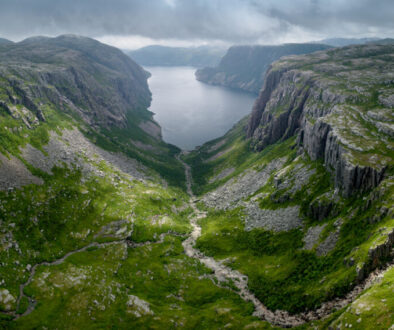Canada Lags the World in Land Protection, but Improved Performance Possible
OTTAWA – In its latest annual report on the state of protected areas in Canada, the Canadian Parks and Wilderness Society (CPAWS) is calling Canada out for ranking last among G7 countries in the percentage of land and freshwater protected for nature. CPAWS’ 2017 report “From Laggard to Leader? Canada’s renewed focus on protecting nature could deliver results,” encourages federal, provincial, and territorial governments to step up their protection efforts in order to conserve Canada’s natural heritage, and deliver on our international commitment.
With only 10.6% of its landscape currently protected, Canada lags behind the global average of 15%, and also trails other large countries such as China, Brazil, and Australia. In 2010, as part of a worldwide effort to stem the tide of biodiversity loss, Canada committed under the United Nations Convention on Biological Diversity to protecting at least 17% of land and inland waters by 2020 and improving the quality of their protected area systems to more effectively conserve nature.
The report highlights that Canadian governments are finally starting to take this commitment seriously after years of inaction. In February 2017, federal, provincial and territorial Ministers responsible for parks and protected areas publicly announced their commitment to work together to achieve this target. A new Pathway to 2020 process was initiated, and an Indigenous Circle of Experts and National Advisory Panel appointed to advise Ministers on this work.
“In many ways, we have taken nature for granted in this country, but there is hope,” says Éric Hébert-Daly, National Executive Director at CPAWS. “As we start down this new collaborative path of protecting more of our landscape, we need to focus not only on meeting the 2020 target, but also on the longer-term goal of completing a protected areas network that will effectively safeguard wildlife and wild spaces for generations to come.”
The report also highlights the opportunity to protect land through nation-to-nation and Inuit-to-Crown relationships and partnerships between Indigenous peoples and federal, provincial and territorial governments. From the proposed Thaidene Nene national and territorial parks in the Northwest Territories, to watershed declarations in northern Ontario, there are many examples across the country where Indigenous peoples are leading efforts to protect land to safeguard ecological and cultural values.
“With less than 3 years to fulfill our 2020 commitment, we need to get going now,” adds Hébert-Daly. “In the report we identify places across Canada where a considerable amount of work has already been done on proposed protected areas. By acting now to permanently protect these sites, while also planning for what’s needed to conserve nature in the long term, Canada has a chance to move from laggard to leader.”
Canada is the second largest country in the world, and stewards of 20% of the Earth’s wild forests, 24% of its wetland, and almost one third of its land-stored carbon. Yet, despite our large areas of wilderness, all of Canada’s ecosystems are declining in health and the number of species at risk of extinction continues to grow each year.
Protected areas are important to conserve wildlife and wilderness, as well as provide clean air and water for all Canadians, store carbon, and play a major role in improving our health and well-being. They also make economic sense. Protected areas around the world generate US$600 billion per year in direct spending, while costing less than US$10 billion per year to manage.
For over 50 years, CPAWS has been working with all levels of government, and other partners across the country to protect more of Canada’s public lands. As the only nationwide charity dedicated to the protection of our public lands and water, we are uniquely positioned to help governments protect what nature really needs.
Read the Executive Summary with recommendations.
For interviews, contact: Karen Turner (613) 569-7226 x 232.


